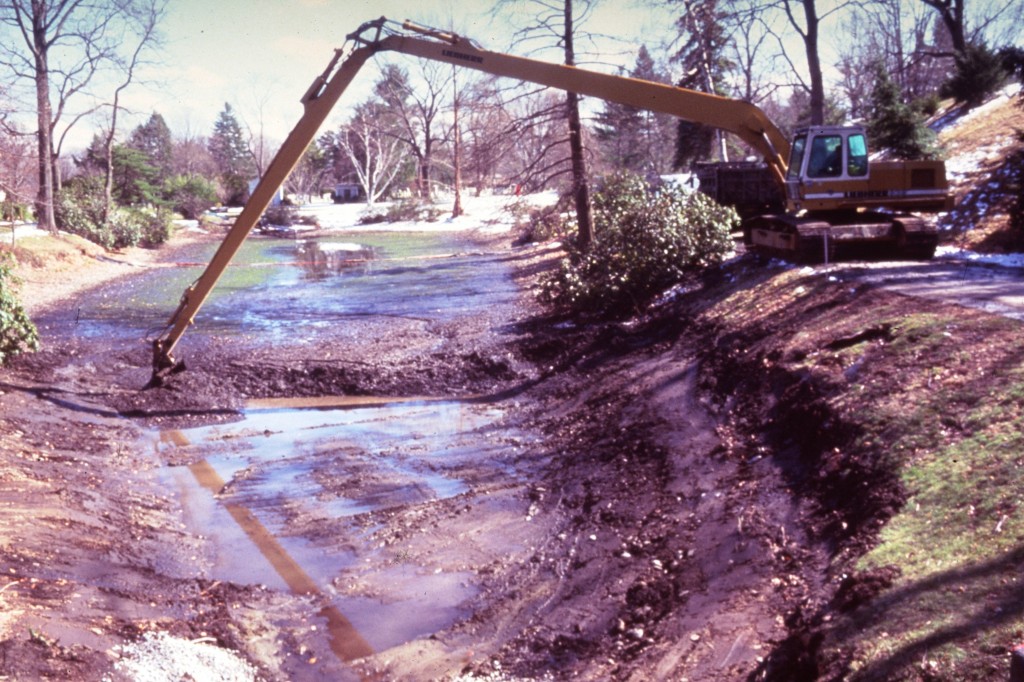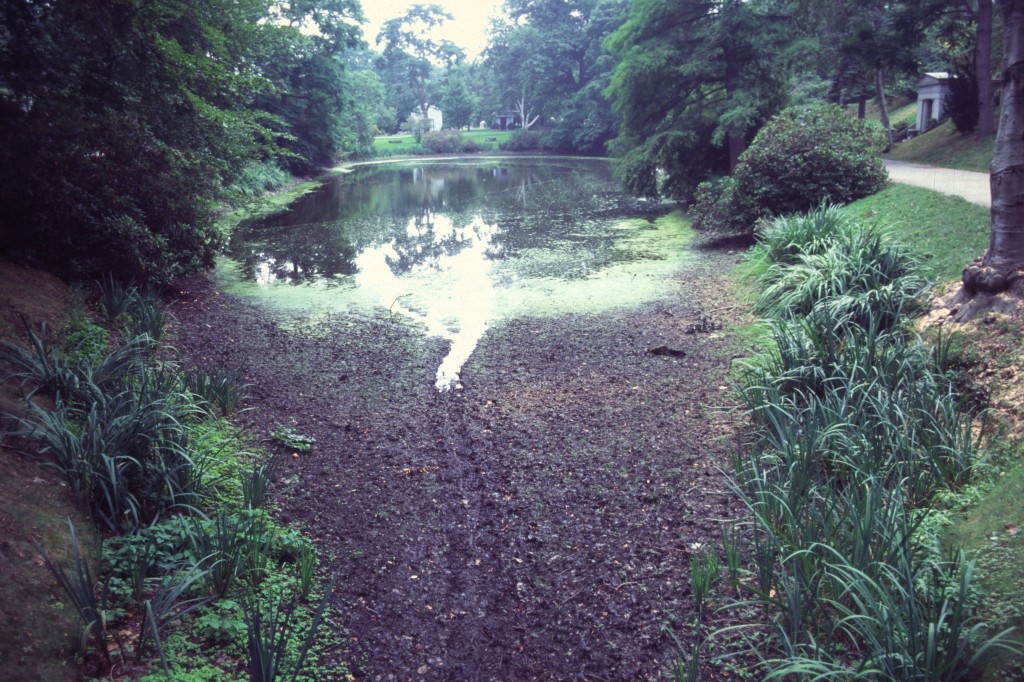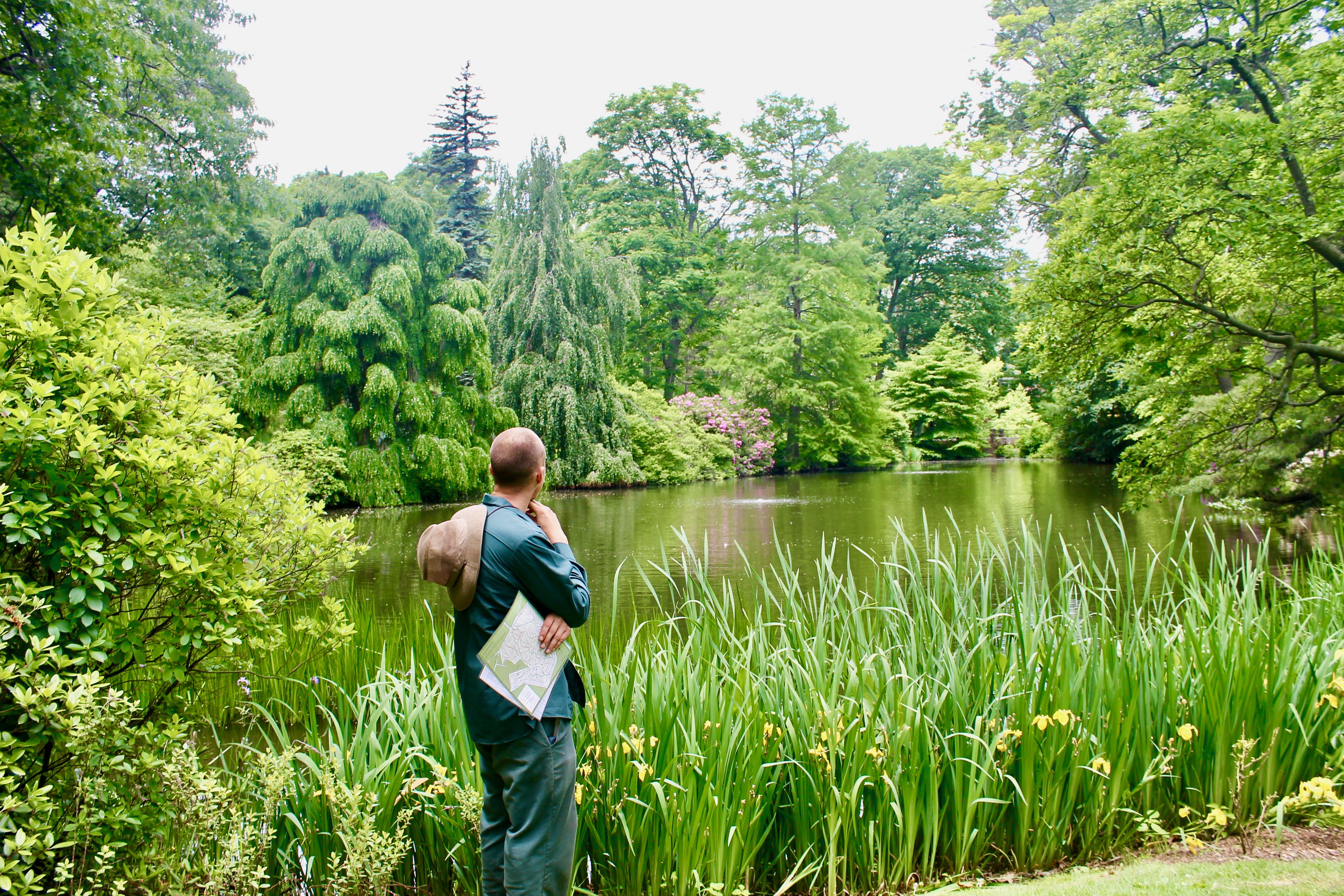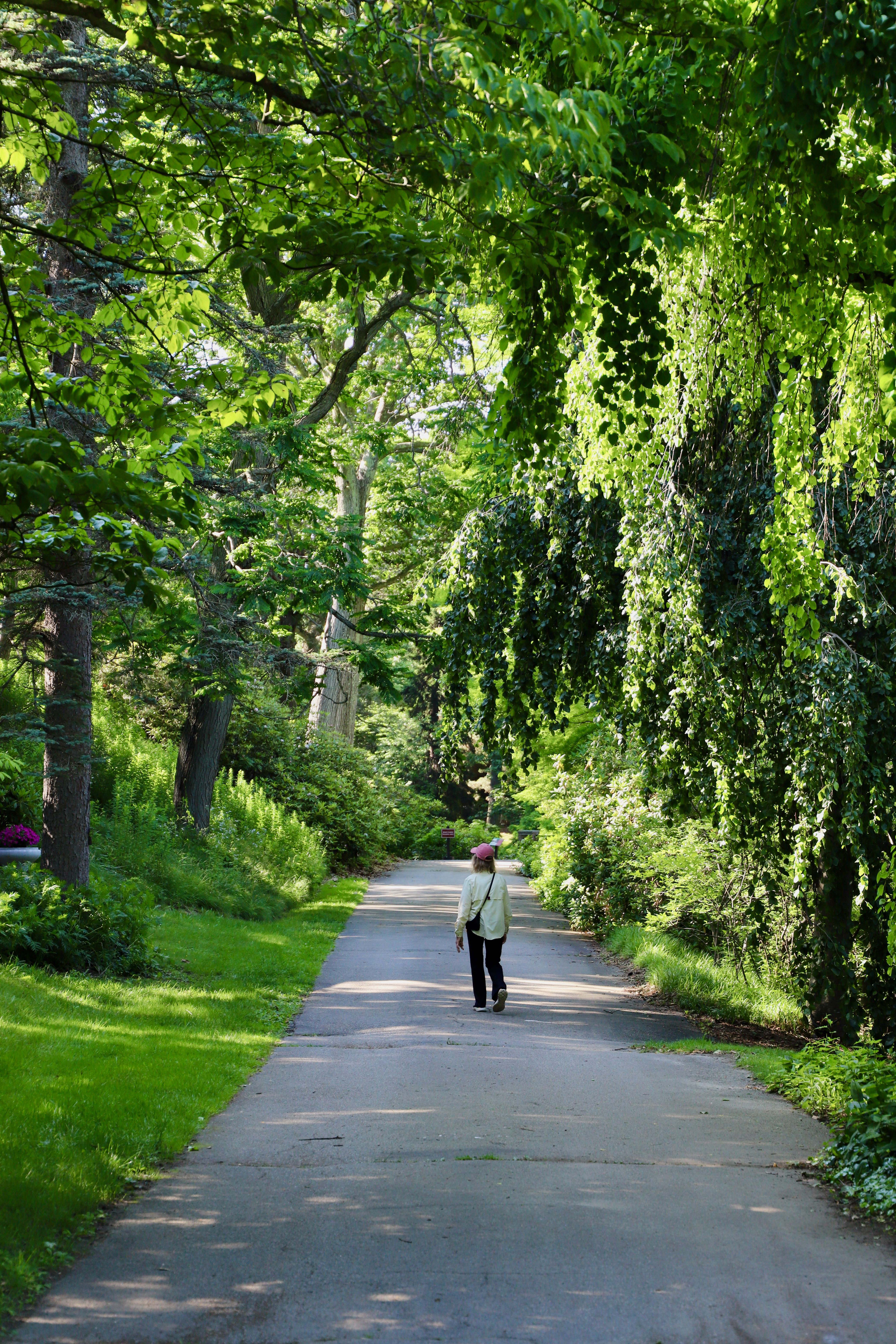
Auburn Lake: Revitalizing a Historic Waterbody
Dry summers during the 1990’s reduced much of the lake to exposed mud flats. Core samples showed the depth of unconsolidated sediment, or “muck,” exceeded nine feet in some areas, leaving average water depths of only about two feet. Concerned about the aesthetics of the landscape as well as the long-term ecological health of the lake, we initiated a process to thoroughly analyze the ecological status of the lake and the alternatives available to us for both its short-term and long-term management.

Working with the consulting firm, Aquatic Control Technology, Inc. (now Solitude Lake Management), and the Watertown Conservation Commission, we decided that dredging was the best course of action. To help with the renovation of the landscape surrounding the lake following its dredging, we retained Halvorson Design, the landscape architecture firm that prepared Mount Auburn’s Master Plan, to work with our staff on a planting plan. The need for new plantings had been made even greater by the damage caused by the very destructive snowstorm of April 1, 1997.
The first step in the design process was Shary Page Berg’s thorough analysis of the history of the landscape development of Auburn Lake. Our goal was to ensure that the replanting respected the past and preserved the historic character of the area. But, as always at Mount Auburn, the question was which period of development was significant and how could we incorporate modern cemetery operational needs as well as new ideas about horticultural maintenance and ecology. The result was a mini-master plan for the area that emphasized its earliest period of development: the naturalist landscape of the mid-19th century with rural paths and roadways and native species interspersed with ornamentals.
We agreed that the shores should be densely planted with overhanging shrubs, many canopy trees and a rich layering of understory plants. One goal of the dredging and replanting was to create a range of water depths to provide a greater diversity of aquatic habitats. A shallow shelf area was constructed along some of the lake edges to promote controlled aquatic plant growth, and an emergent marshy zone was planned for each end of the lake. The centers of each of the two “basins” of Auburn Lake, on the other hand, were deepened to 8 to 10 feet to improve the habitat for certain fish and to help control the spread of the aquatic plants.

To help us replant the edges in a manner most beneficial to wildlife, we asked Christopher Leahy, Director, Conservation Department, Massachusetts Audubon Society, for his advice. He was extremely helpful in providing ideas to enhance the long-term ecological values of the site, including improving the habitat for both birds and birders. The result was an improved habitat for a greater diversity of wildlife as well as improved water clarity giving the lake a better aesthetic appearance.
The actual dredging process occurred in March 1998, with the approval of the Watertown Conservation Commission and the Massachusetts Department of Environmental Protection. Each basin was in turn pumped dry, using an elaborate system of barriers, sedimentation and filtration, and an excavator with a 70-foot long reach then removed the sediment. Parked at several points around the edge of the lake, the excavator loaded the soupy “muck” directly onto dump trucks which then transported the material to a containment basin near the Greenhouse. The dredging was completed during the first week of April, and the two basins were completely refilled to the high water mark within one week simply from the groundwater recharge, which had been strengthened by the removal of the sediment.

Then we began the exciting work of reframing the restored waterbody with new plants. Mount Auburn’s gardening crew, under the supervision of Assistant Director of Horticulture Claude Benoit, using the plan developed by The Halvorson Company and himself, completed the first phase of the replanting around the perimeter of the south basin during April and early May. As the plantings have begun to fill-in and mature, their horticultural diversity and naturalistic character as well as ecological value in providing food and cover for birds and other wildlife have become increasingly evident. The second phase of the work will focus on the north end of the lake. We will convert the paved road in this area to a narrower gravel path and augment the existing plantings.
Over the years we continue to add more trees, shrubs, and perennials to the Auburn Lake area to realize our goal of recreating the naturalistic historic character of one of the Cemetery’s most beautiful areas.
Acknowledgements
The thoroughness and expertise that we were able to bring to this project were made possible by the many charitable gifts made by hundreds of individuals, foundations and corporations in response to our Tree Repair Fund appeal and Annual Appeals. We are very grateful to everyone who contributed.






